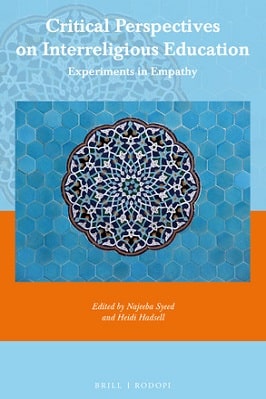
| Book Title | Critical Perspectives On Interreligious Education |
| Book Author | Heidi Hadsell |
| Total Pages | 258 |
| Book Views | |
| Language | English |
| Book Download | PDF Direct Download Link |
| Get Hardcover | Click for Hard Similar Copy from Amazon |
Critical Perspectives on Interreligious Education – Experiments in Empathy By Najeeba Syeed – Heidi Hadsell
CRITICAL PERSPECTIVES ON INTERRELIGIOUS EDUCATION
Developing Pedagogies of Interreligious Understanding
The essays in this volume were developed in conversations over a period of years by participants in a project on “Interreligious Education and Pedagogy.” Project participants shared their own experiences of developing and evaluating interreligious programs, their successes and their frustrations.
They learned from and with one another, and several of them participated in panels at professional associations or contributed essays to volumes on interreligious pedagogies. They sought out conversations with educators and essays by faculty from institutions and backgrounds beyond their own.
The project also sponsored a research report mapping the current state of interreligious learning in theological schools and seminaries. The report expanded upon the contributions of project participants with a thorough review of published literature and in-person or online interviews with faculty from a wider group of institutions. Each institution has had its own distinctive journey of challenges and opportunities, which has shaped its approach/es to interreligious education.
This brief chapter will reflect on the pedagogical issues and implications of the essays in this volume, informed by the broader research of the project.
Overcoming the Obstacle of Monotheistic Exclusivism
This volume, and the project which developed it, focused primarily on theological schools and seminaries, and primarily on Christian, Jewish, and Muslim programs of interreligious education.
Given that focus, initiatives in interreligious education had to break free from historic constraints against positive views of other religions, constraints that are deeply embedded in the mainstream histories of these three great traditions. Reuven Firestone’s essay addresses this issue head-on, exploring how the historical rise of monotheism positioned monotheistic religions to argue against and/or condemn other religions.
But he goes on to argue that in the post-enlightenment era, some educated adherents of monotheistic religions have become increasingly aware that their tradition is embedded in rich cultural diversity, a vast array of different pieces of knowledge, and many sophisticated religions.
In his view, and given that awareness, it is important for students, especially seminary students, to recognize that as powerful and authentic as their own tradition is, it does not contain all knowledge or wisdom.
Learning something of the wisdom of other traditions not only cultivates appropriate spiritual humility (there is always more to learn of God’s revelation), but also gives rise to questions that it may be important—even vital—to ask of their own tradition. He thus makes a case for exposure (a course, perhaps) to help establish the need and appetite for life-long learning of theological students.
Firestone makes an excellent case for the “exposure” approach to interreligious education: adding a course, or a text, or a speaker about “another tradition” to help students recognize that the worldview that has shaped them is not inevitable, or the only option: that there are many approaches to the search for religious truth.
This exposure model is very often an institution’s first step toward interreligious education, and it is still prevalent, though the experiences of this volume’s authors have led most of them to go beyond this model.
Tony Richie’s arguments for a Pentecostal/Evangelical approach to interreligious education also deals directly with the resistance of many in his denomination. He, like some other Pentecostal and Evangelical theologians, seeks to maintain a strong commitment to high Christology and missiology with an openness to dialogue and interreligious education and relationships.
These theologians turn to pneumatology (the Holy Spirit) to argue that Christ and God are not bound by the institutional church, but are at work everywhere, including in and through other religions.
And they build on Pentecostalism’s commitment to an affective experience of God and to lived Christianity as the goal of education to argue for an interreligious educational approach that leads Pentecostals out into the interreligious world to work alongside many others, including allies from other religions, against secularism and oppression of the marginalized.
Given the history of the conservative rejection of other religions, these Pentecostal/Evangelical approaches have to include both a the-ology of religions (teaching students how to reconcile their Christian theological commitments with openness to other religions) and ministry in a multi-faith context (providing alternative models of Christian hospitality to and partnership with adherents of other faiths).
These pioneers in interreligious education are working against some resistance within their denominations, but they are providing leadership in both their teaching and their theological writings.
To read more about the Critical Perspectives On Interreligious Education book Click the download button below to get it for free
Report broken link
Support this Website
Click here to join our Telegram group for new Books